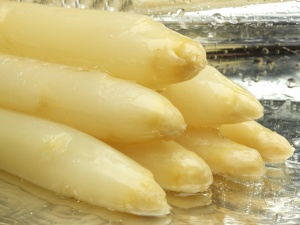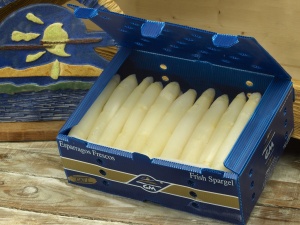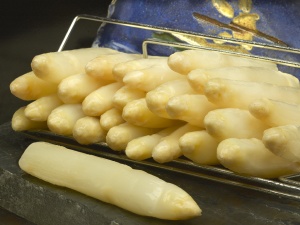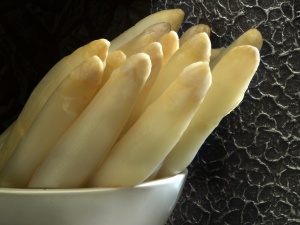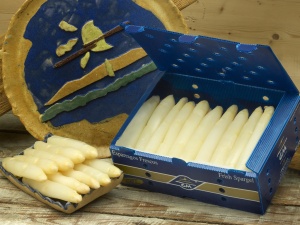WHITE ASPARAGUS
White asparagus, although less popular than green, is also a good diuretic and high in fibre. Countries like Germany and Switzerland prefer white asparagus, so GM&S imports large calibre spears, usually loose.
REASONS TO EAT IT
- White asparagus is a natural blood purifier
- White asparagus is an antioxidant and strengthens the immune system.
VARIETIES
Asparagus varieties are green, white and purple. White asparagus is shielded from sunlight to stop it turning green.
PACKAGING FORMATS
White asparagus is sold loose in 2.8 kilo boxes and in bundles of different weights, depending on the market.
BRANDS
We always sell our white asparagus under the GM and TUCANO brands for different clients and markets.
| values per 100 gr | |
|---|---|
| Calories | 23 Kcal. |
| Protein | 2.28 gr. |
| Carbohydrates | 4.54 gr. |
| Fibre | 2.1 gr. |
| Calcium | 21 mgr. |
| Iron | 0,87 mgr. |
| Vitamin C | 13,2 mgr. |
| Cholesterol | 0 gr. |
NUTRITION INFORMATION
Asparagus mainly provides vitamins C and E, folic acid, thiamine (vitamin B1) and riboflavin (vitamin B2). However, green asparagus has a higher vitamin content than white. Asparagus contains phosphorus, iron, magnesium and potassium. It stimulates urine production in the kidneys, and can be very helpful in cases of water retention.
ORIGIN AND CHARACTERISTICS
Asparagus was grown by the Egyptians more than 6,000 years ago. It was much appreciated in ancient Greece and Rome. Present-day varieties appear to originate in selective breeding in the Netherlands, from the 17th century on.
Asparagus is the stem of Asparagus officinalis, a perennial plant in the Asparagaceae family. The asparagus plant has branching stems and a fasciculated root system. The young shoots are the edible part we know as asparagus.
STORAGE AND CONSUMPTION RECOMMENDATIONS
Wrap the asparagus in a damp cloth and store in the refrigerator. Ideal temperature: 2 - 5 ºC.
Better quality asparagus has tender but firm and even-textured stems, with fleshy, well-shaped tips.
Green asparagus has a more intense flavour and aroma, a meatier texture, and higher nutritional value.

